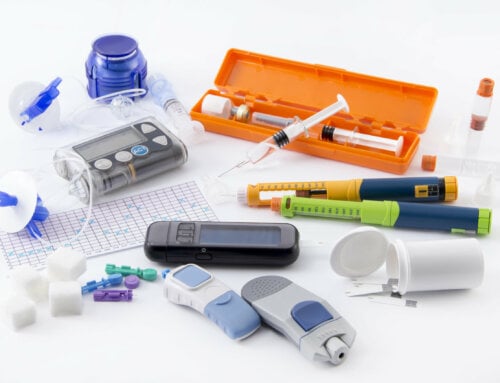Diabetes is a disease often associated with inflammation. People with diabetes are also prone to certain health conditions such as obesity, high cholesterol, heart disease and stroke. Learn more about CRP. LDL and homocysteine levels and how they relate to diabetes.
- C Reactive Protein- commonly referred to as CRP, is a protein produced by your liver. It is used as a blood marker to determine the basic level of inflammation in your body. Health conditions that involve inflammation, such as diabetes or heart disease can increase your CRP levels. A variety of other health conditions can boost your CRP, including cancer, arthritis or infections. For this reason, CRP must be considered in combination with LDL-to-HDL ratios and homocysteine levels. Knowing these levels can indicate the reason for inflammation in your body. If a person has diabetes, elevated levels could be an indication of arterial damage.
- Homocysteine is an amino acid that is present in your body. It oxidizes LDL cholesterol, which can damage arteries and lead to additional inflammation. Oxidized LDL that gets under the lining of your arteries can trigger an inflammatory response, causing more CRP and inflammation. LDL, often referred to as “bad” cholesterol, builds up and white blood cells called macrophages attempt to engulf the damaged and oxidized LDL. This waxy, fatty substance from LDL then spills into the arterial walls. As a result, a person’s CRP levels are further elevated and there is more inflammation. Arterial plaque can form, which may lead to a heart attack or stroke. It is important for people with diabetes to have all these levels checked during routine blood tests. If your CRP is between 2.6 and 4.0 you are at an elevated risk.
- If you have elevated levels and your medical team suspects it is due to arterial inflammation, you need to reduce your LDL and homocysteine levels. Antioxidants can help you lower these levels and reduce inflammation. Antioxidants to include in your diet are vitamins B6 and B12, folic acid, vitamin D and vitamin E. A well-balanced diet should include green, leafy vegetables, fresh fruit, lean fish and meat, whole grains and low-fat dairy products. Your physician may also recommend statin drugs to help lower your cholesterol levels.
- Being overweight or obese increases your risk of high cholesterol, heart disease and other health problems. Use portion plates to determine how much you should eat from each of the four food groups. Stay away from foods such as packaged cakes and cookies, fast food and convenience foods. Try to increase your intake of healthy fats which may help flush out bad cholesterol. HDL or “good” cholesterol is found in fatty fish such as tuna and salmon. Eat healthy with small portions and do not skip meals which will reduce your urge to binge on unhealthy foods. This can minimize the risk of blood sugar fluctuations. Talk to your doctor about taking vitamin supplements if you suspect you are not getting enough nutrients. Consult with a dietitian or a diabetes nurse educator to help you create a healthy diet plan that fits in your daily schedule.
- People with diabetes also need to exercise and move around every day. Include resistance training, stretching and aerobics to strengthen your body and burn fat. Take a walk around your neighborhood or during your break at work. Join a local gym or invest in workout equipment for your home. The goal is to keep moving and when exercising is fun, you are more likely to do it. This helps you maintain a healthy weight and reduce cholesterol levels.
- Know your numbers when it comes to cholesterol. To reduce your risk of heart disease, your LDL should be less than 100 mg/dl and your HDL should be higher than 40 mg/dl for men and 50 mg/dl for women. Triglyceride levels should be less than 150 mg/dl. Ask your doctor about how often you should have your blood levels checked. Along with a proper diet and regular exercise, ways to improve these numbers include losing excess weight, quitting habits such as smoking and increasing your intake of monounsaturated fats such as avocado oil, canola oil and olive oil. Your cholesterol may be affected by your blood pressure and blood glucose. Keep plenty of diabetic testing supplies on-hand to check your blood sugar levels throughout the day, especially at certain times such as after meals and exercising. Be aware of what to do with these numbers.
Proper diabetes self-management includes blood testing, a healthy diet and regular exercise. Discuss CRP, LDL and homocysteine levels with your health care team. Know what to do to help you reduce health complications and maintain the best possible health.







Leave A Comment